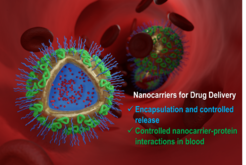Max Planck - VISTEC Partner Laboratory
for Sustained Materials
Welcome
The Max Planck-VISTEC Partner Laboratory for Sustainable Materials is the first official collaborative unit in Thailand with a Max Planck Institute. The aim is to develop and strengthen research collaborations between the Vidyasirimedhi Institute of Science and Technology (VISTEC) and the Max Planck Institute for Polymer Research. The collaboration is concretized via common research topics and publications and exchange of students for periods ranging from few months to 2 years.
Research
Materials for biomedical applications

We design nanoparticles as drug-delivery systems so that they display controlled protein interactions in the body, low cytotoxicity, and optimized kinetics of drugs release. One approach that we follow is to take advantage of the large landscape of available biopolymers in Thailand.
Sustainable materials

We aim at developing materials that possess self-healing and anticorrosion properties. Polymer materials are engineered so that corrosion inhibitors are released when corrosion occurs. Multifunctional materials with additional sensing features are also created.
Group coordinators

Dr. Shuai Jiang

Assoc. Prof. Daniel Crespy
Selected Publications











